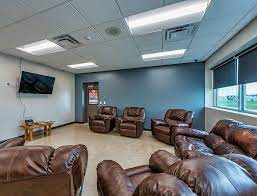Fire station beds are essential to keeping firefighters well-rested and able to respond to emergency situations at a moment’s notice. As opposed to traditional beds in private homes, fire station beds are designed with the unique demands of firefighters in mind. They combine the comfort of a bed with practicality.
Design and Functionality
firehouse beds are typically built to be able to withstand any demands of a bustling firehouse. They are usually constructed of robust materials that are able to withstand heavy use and frequent cleaning. The majority of fire stations have beds that have metal frames and top-quality mattress that is easy to clean. This type of design ensures cleanliness and extends the life of. The beds are generally set in shared sleeping areas, since firefighters typically work in shifts and may need to rest for different times.
Flexibility and Adaptability
One of the key characteristics that distinguish fire station beds is their flexibility. Given the inexplicably high volume of emergency calls, bed are often made to be swiftly and easily put together or removed. Some fire stations utilize beds that fold or modularize and can be reconfigured based on the needs of the personnel. This flexibility is essential in maintaining an organized and functional space, especially in smaller stations where space can be small.
Hygiene and Maintenance
Hygiene is an absolute priority in fire station sleeping quarters. Regular maintenance and cleaning are vital to stop the accumulation of germs and bacteria. Beds at fire stations are generally fitted with covers and mattress protectors that can be easily removed and cleaned. In addition, many fire stations implement strict cleaning guidelines to ensure that sleeping areas are clean and comfortable for all personnel.
Comfort and Ergonomics
Comfort is a significant consideration for fire station beds, as adequate rest is essential for firefighters to be able to work efficiently. Mattresses are usually chosen due to their ability to support and alleviate back discomfort and fatigue. Fire stations could consider investing in ergonomic bedding solutions that improve sleep quality, given that firefighters may need to recuperate quickly between calls.
Personalization and Privacy
Although some fire stations provide separate sleeping areas, most have communal areas because of space limitations. In such situations, privacy can be a problem, and fire stations usually address this issue through curtains or partitions to create private sleeping areas. This arrangement allows firefighters to relax without being exposed, and provides a degree of privacy in shared accommodations.
Conclusion
Beds for fire stations are much more than a place to sleep they are an essential element of a firefighter’s capability to be effective in their work. With a focus on strength as well as flexibility and comfort, these beds are designed to cater to the demands of emergency responders. A well-maintained and well-designed design ensure that firefighters can relax well and be prepared for any emergency that comes their way.



